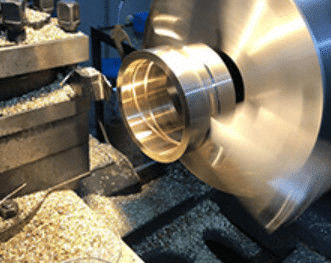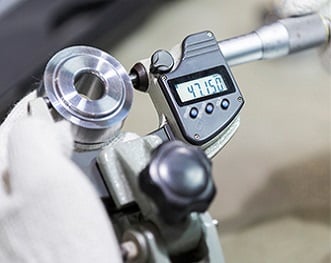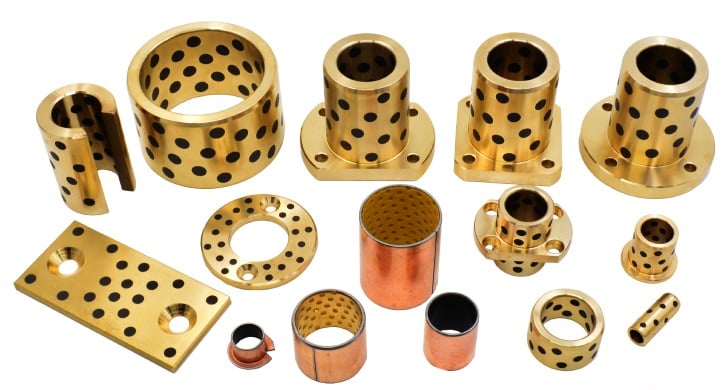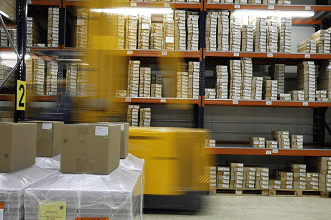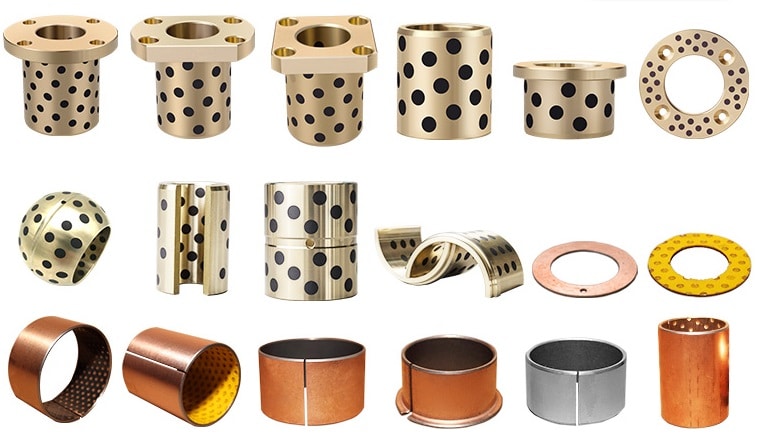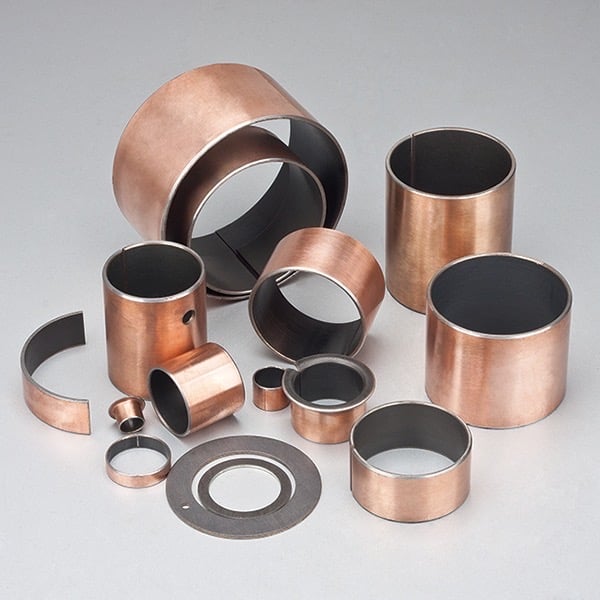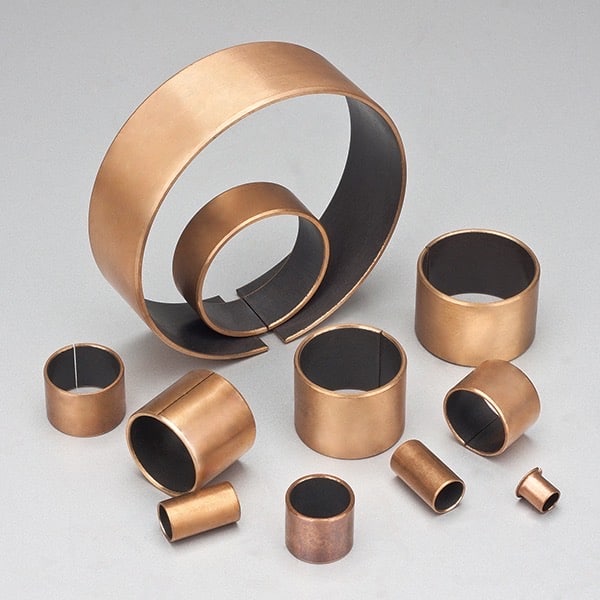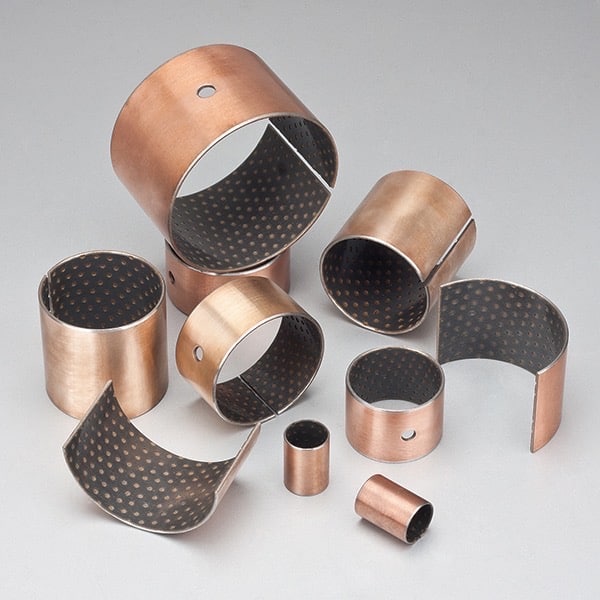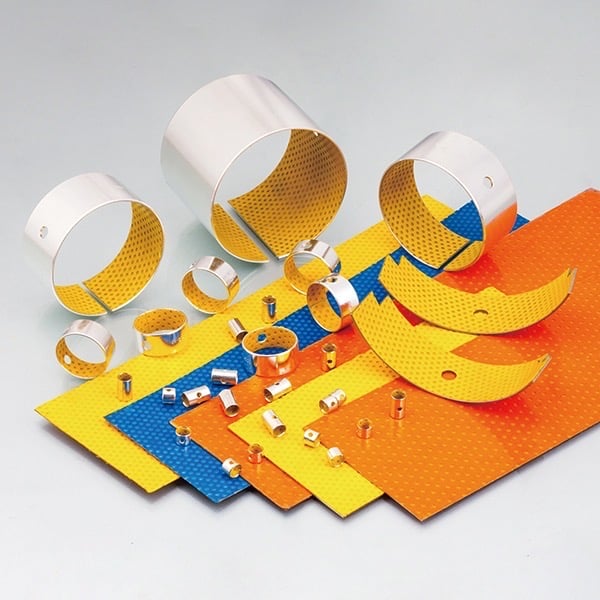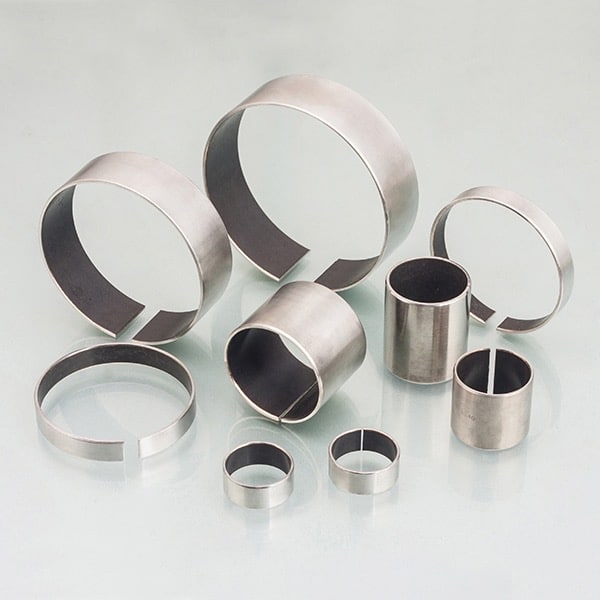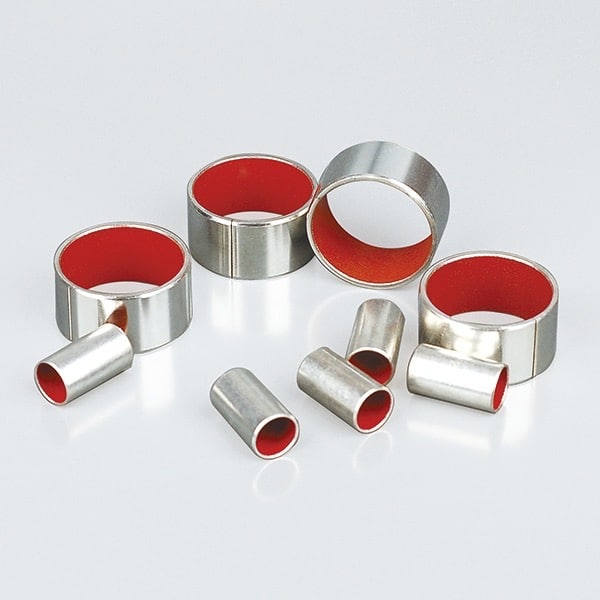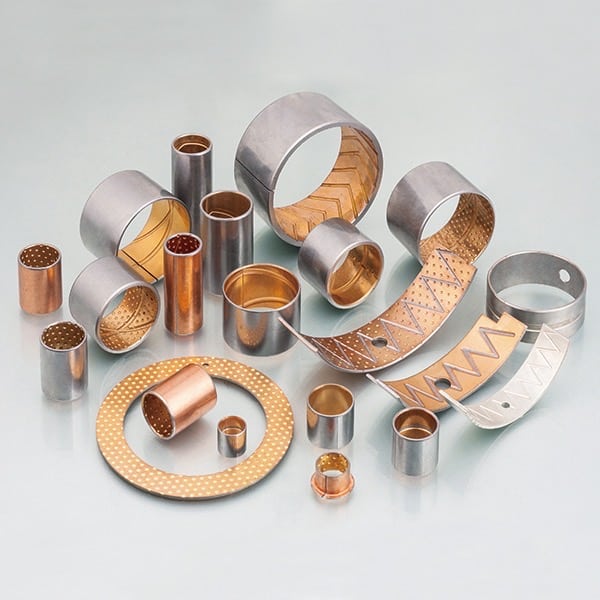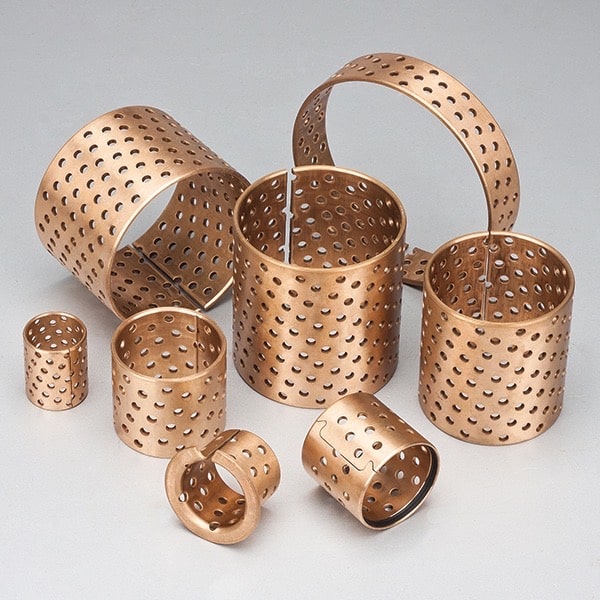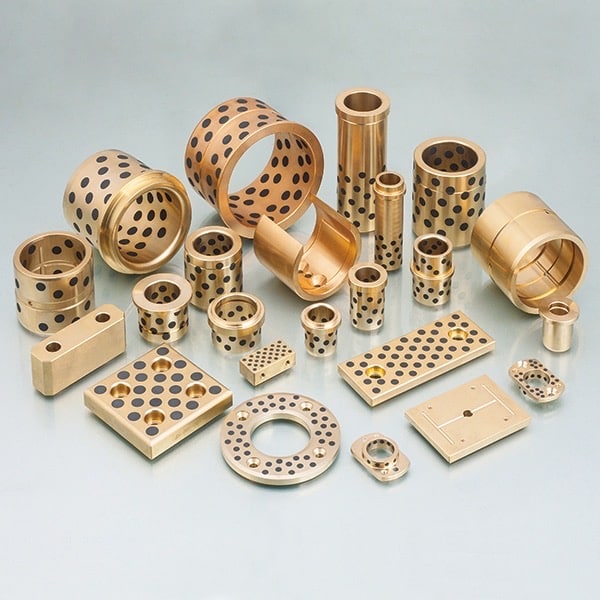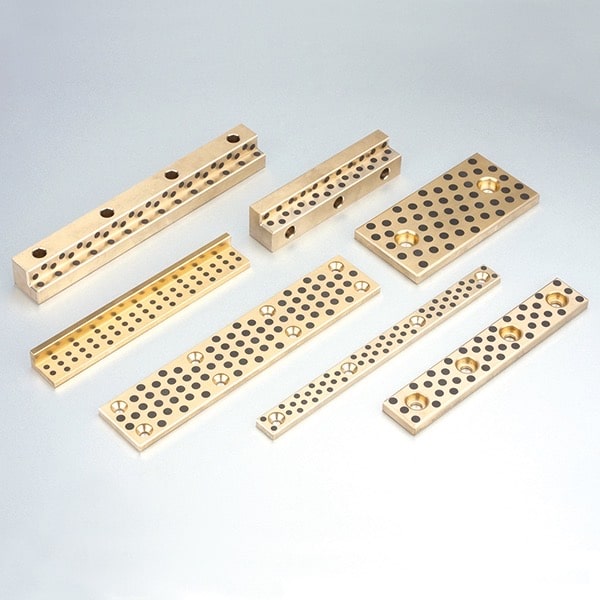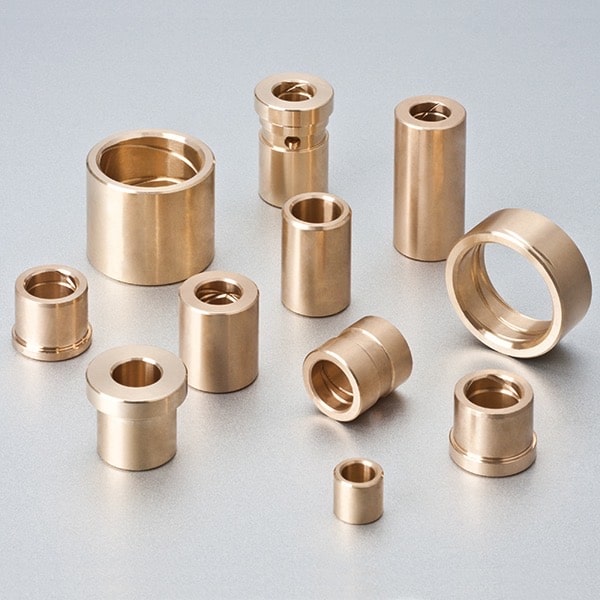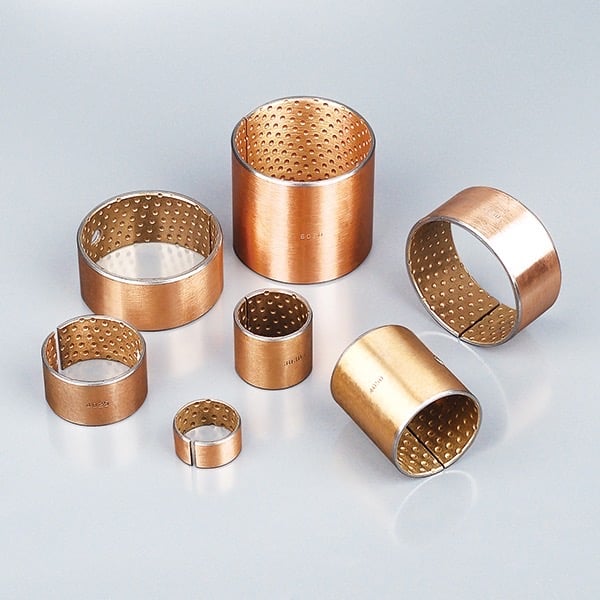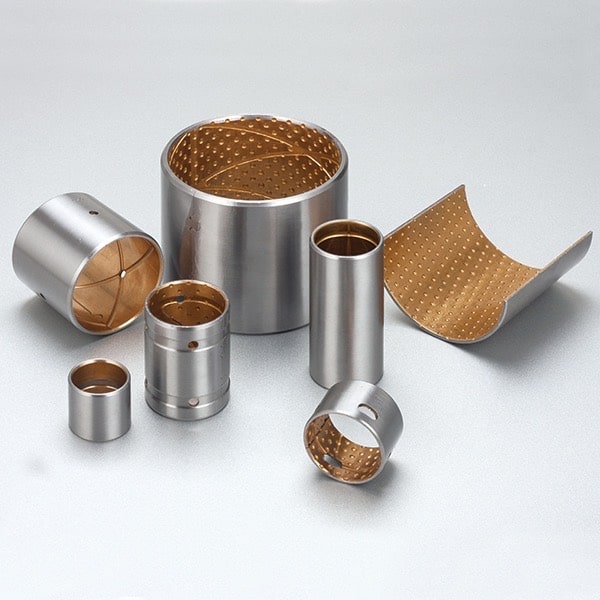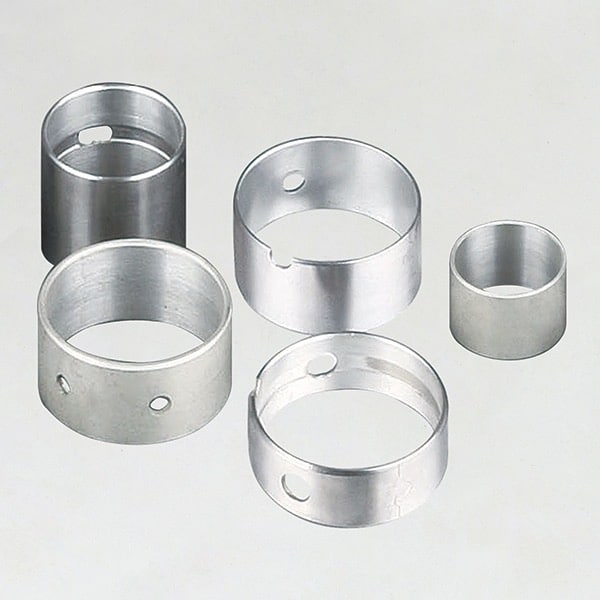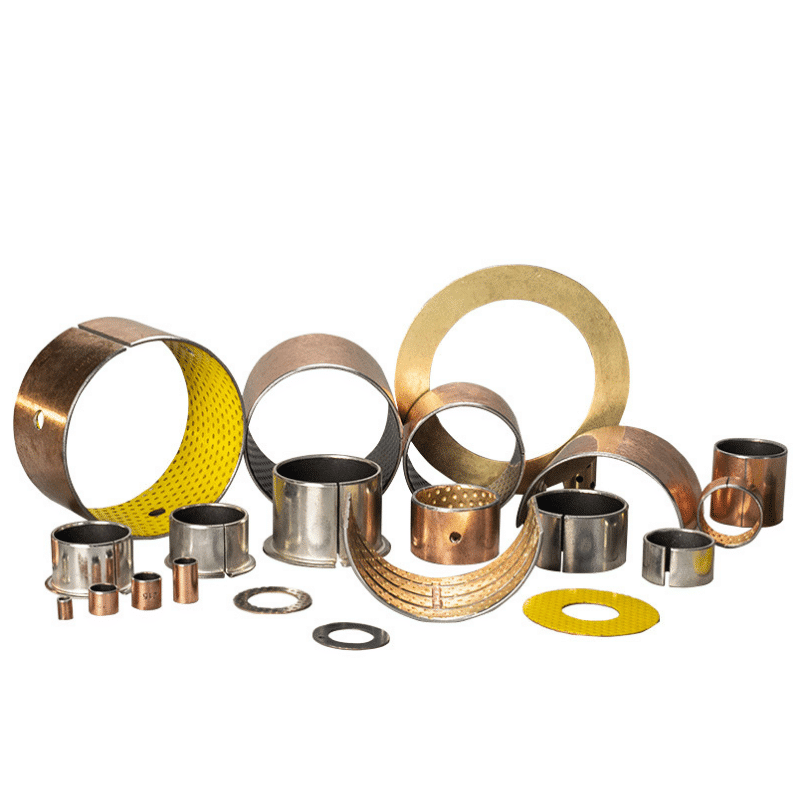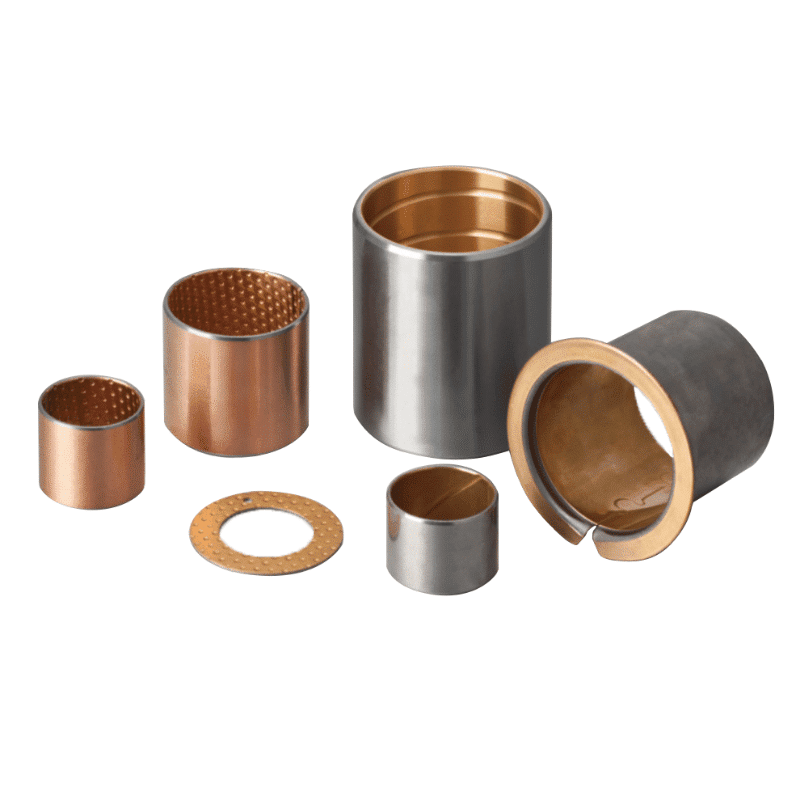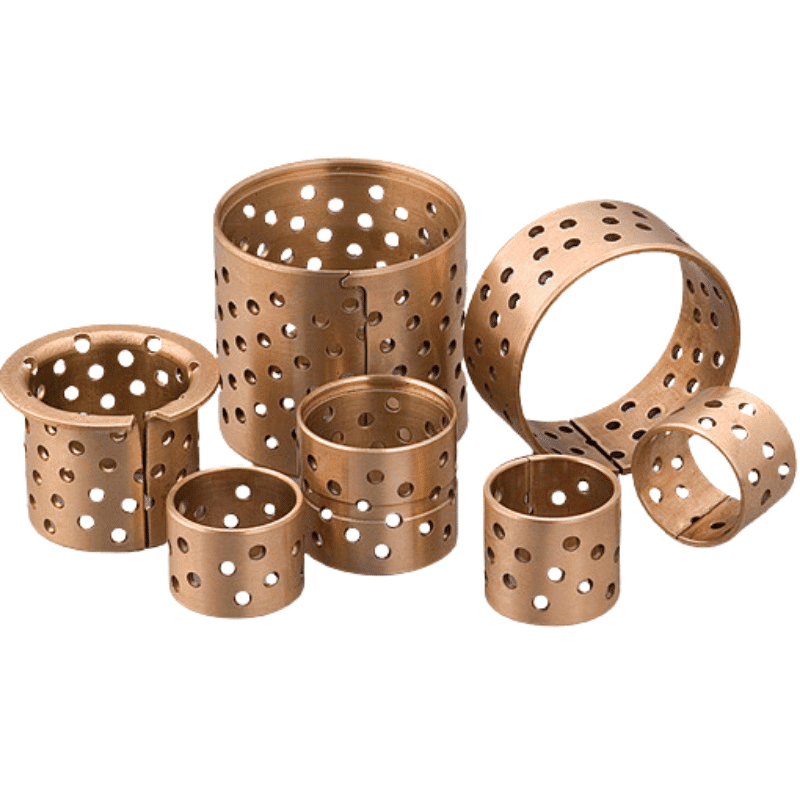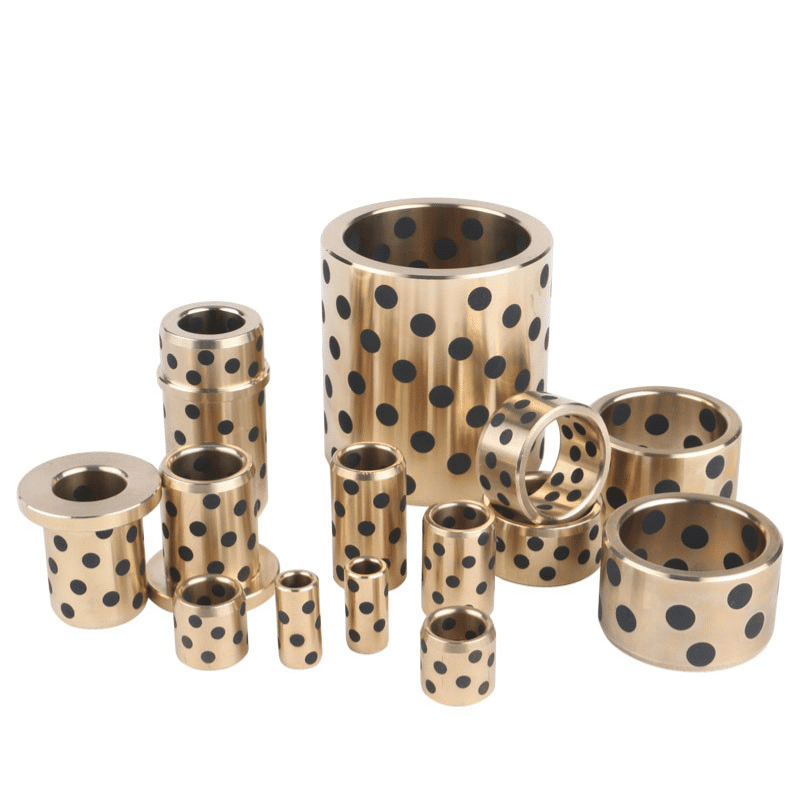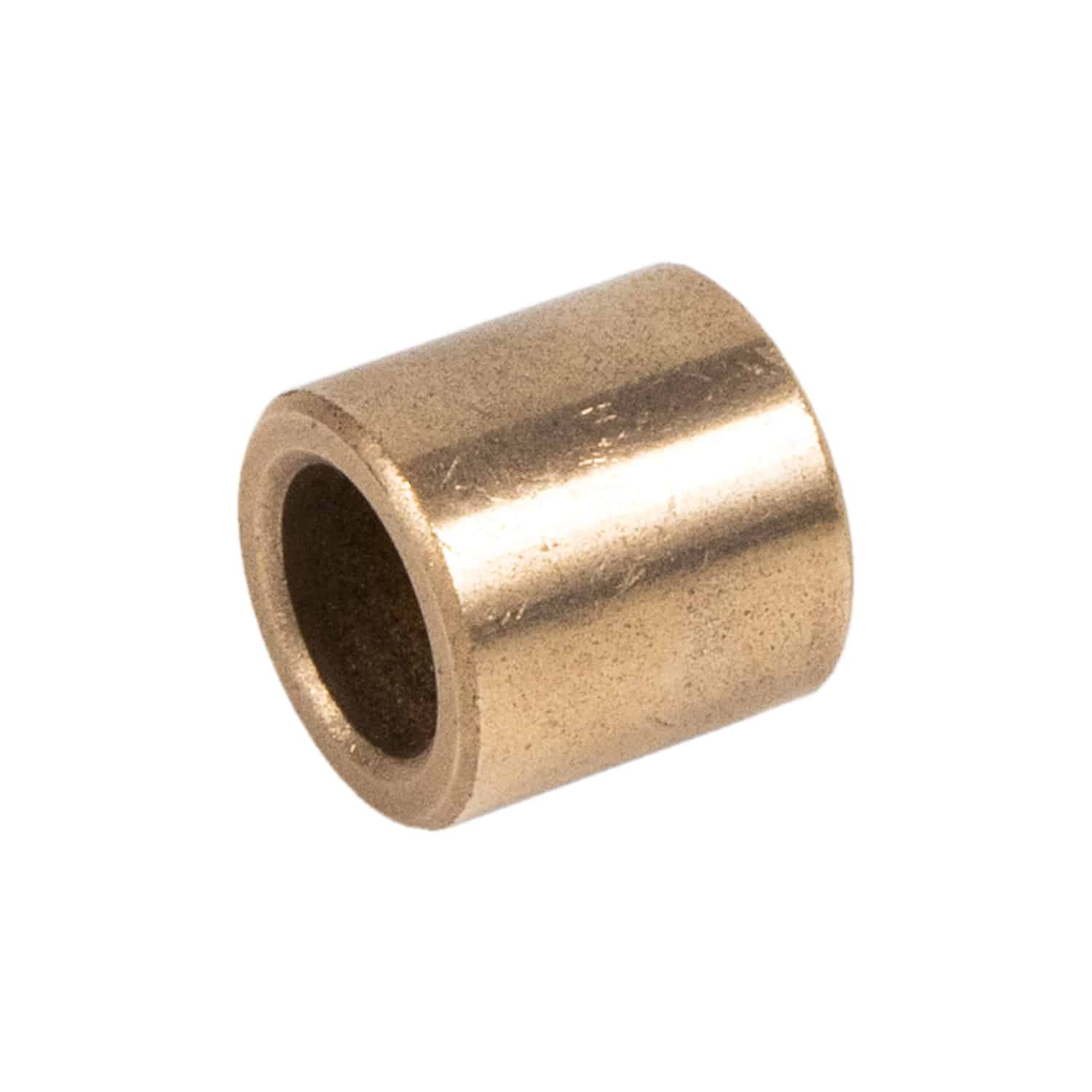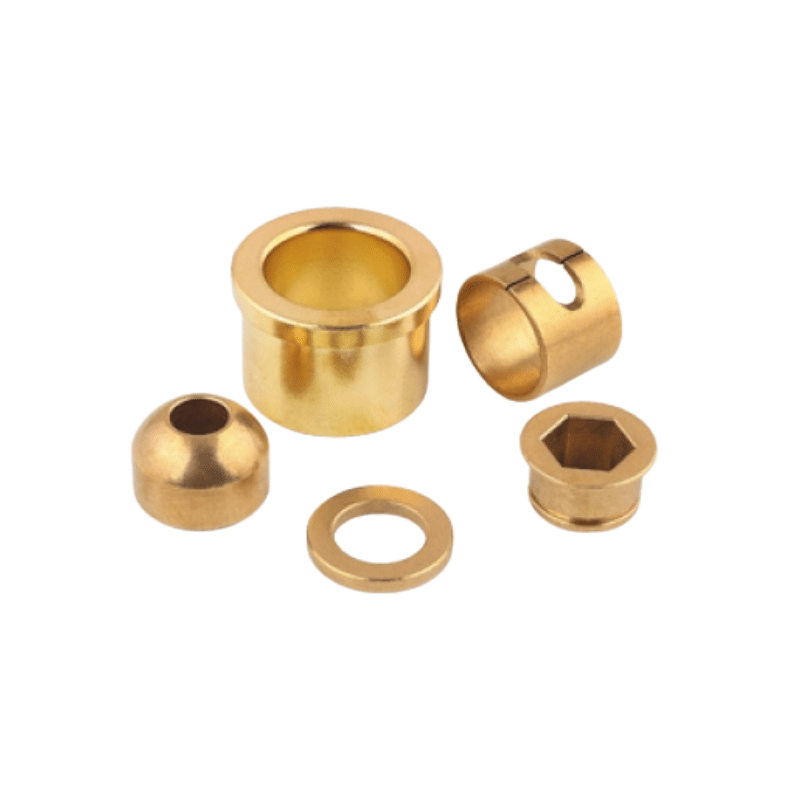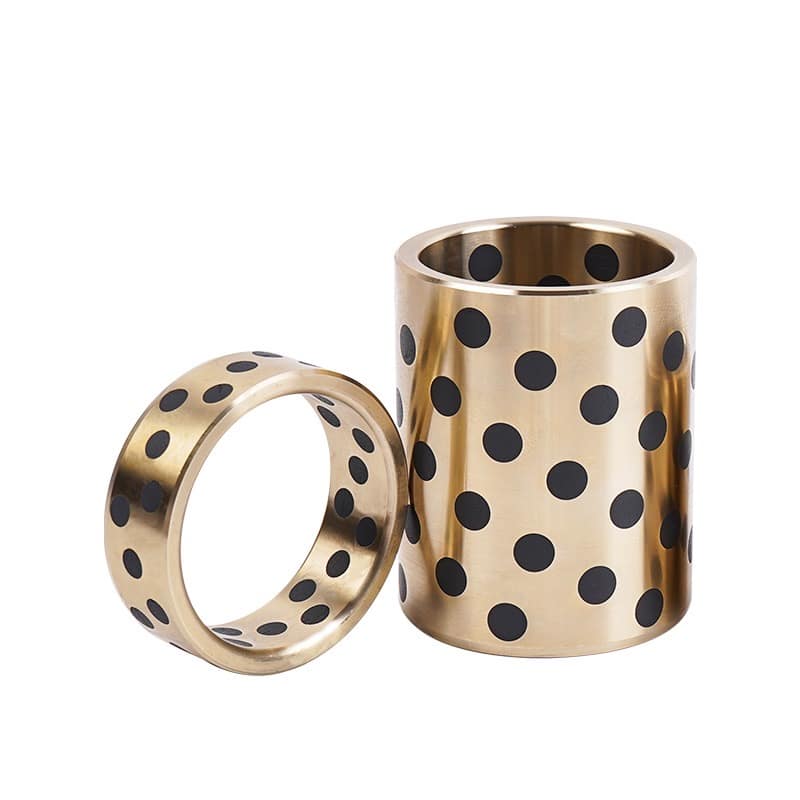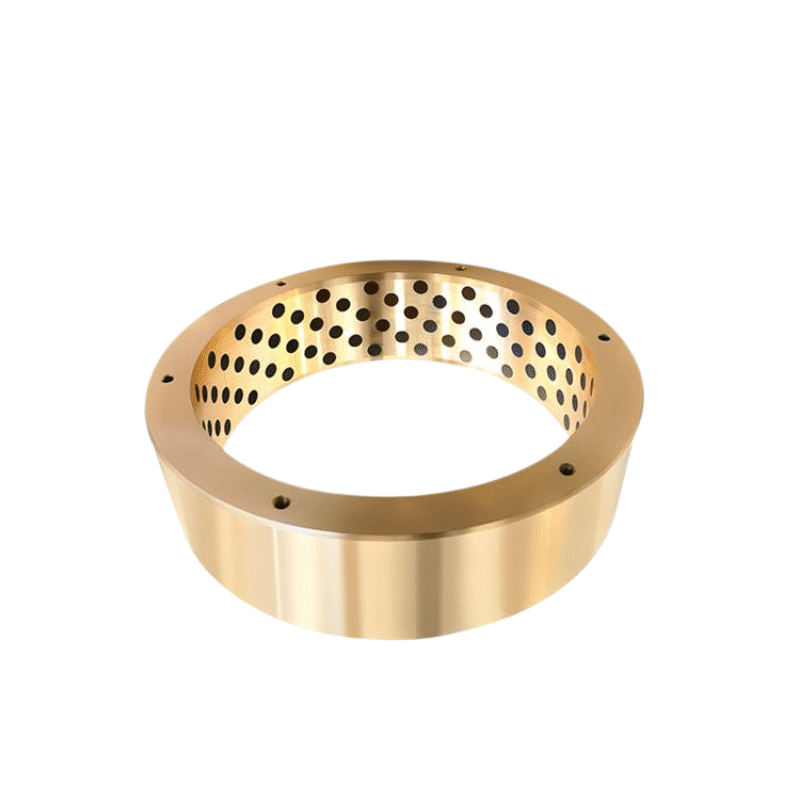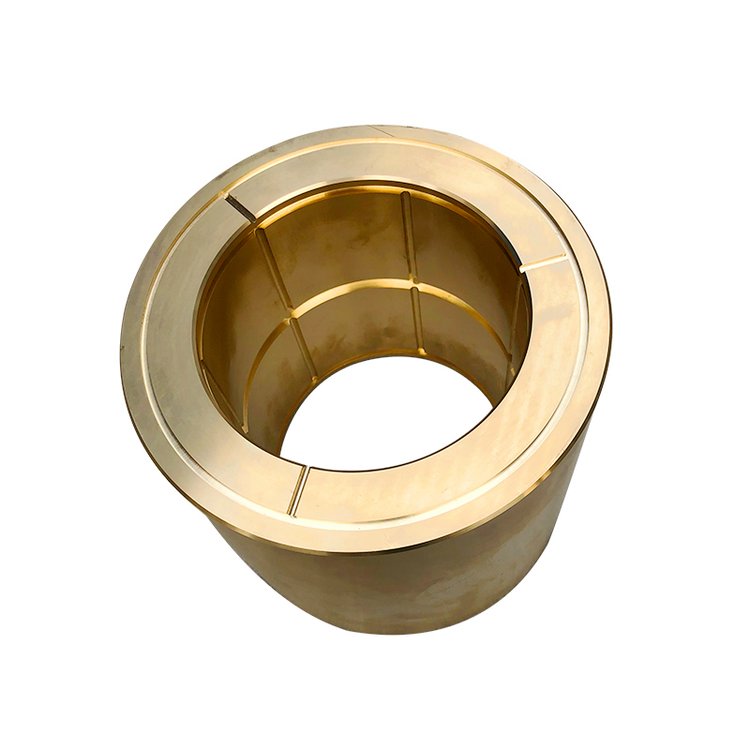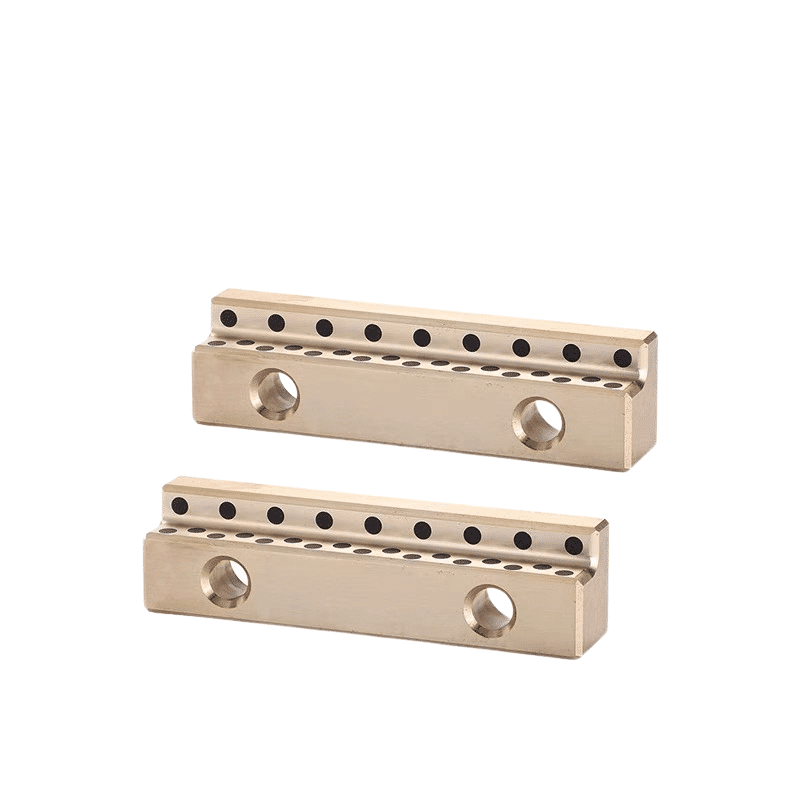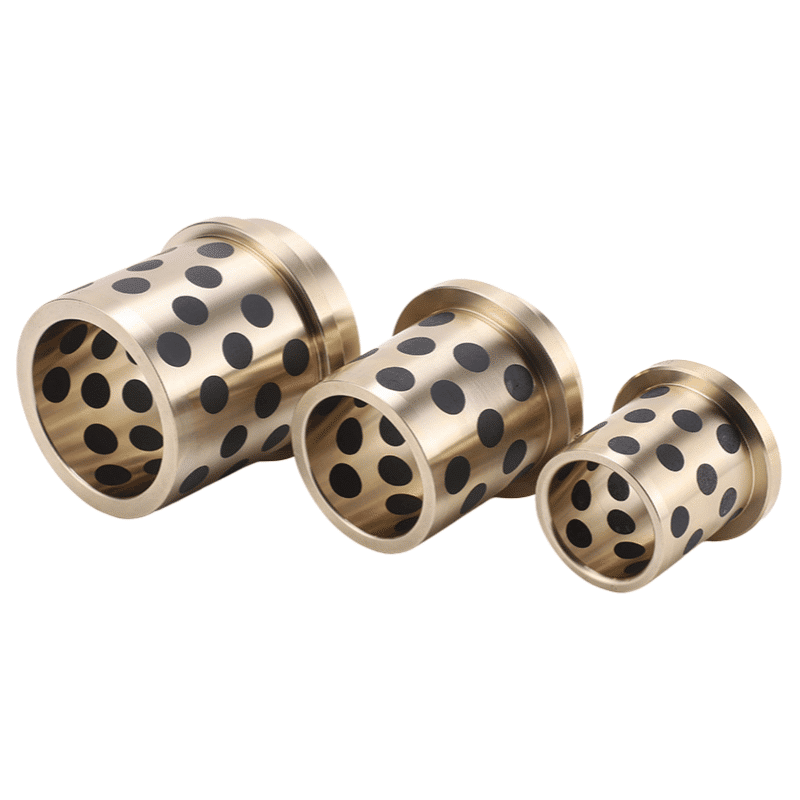We supply bush bearings tailored to your individual needs.
Bush bearing material
Bush bearings are an essential component in many mechanical systems, and the material used in their construction is critical to their performance and durability. There are several materials commonly used in the manufacture of bush bearings, each with its own unique properties and advantages.
The most commonly used material for bush bearings is bronze. Bronze is a metal alloy that is known for its excellent strength, wear resistance, and durability. It also has a low coefficient of friction, which helps to reduce wear and extend the life of the bearing. Additionally, bronze is highly resistant to corrosion, making it ideal for use in harsh environments.
Another popular material used in the manufacture of bush bearings is brass. Brass is similar to bronze in many ways, but it is typically softer and less durable. Despite this, brass is still a popular material for bush bearings due to its low cost and easy availability.
Steel is another material commonly used in the manufacture of bush bearings. Steel is known for its strength and durability, and it is often used in high-load applications where a bearing must withstand a significant amount of stress. However, steel is not as corrosion-resistant as bronze or brass, so it is typically used in applications where corrosion is not a concern.
Polymer materials, such as polytetrafluoroethylene (PTFE), are also commonly used in the manufacture of bush bearings. PTFE is a low-friction and wear-resistant material that is ideal for high-load applications. It is also highly resistant to wear and corrosion, making it well-suited for use in harsh environments.
In conclusion, the material used in the manufacture of bush bearings is critical to their performance and durability. Bronze, brass, steel, and polymer materials are all commonly used, and each has its own unique properties and advantages. When selecting a bush bearing material, it is important to consider factors such as strength, wear resistance, corrosion resistance, and cost, to ensure that you choose the best material for your specific needs.
Bush Bearings Supplier
Bush bearings are an essential component in many mechanical systems, and choosing the right supplier is critical to ensuring that you get the best product for your needs. There are several factors to consider when selecting a bush bearing supplier, including their experience and expertise, the quality of their products, and their ability to meet your specific requirements.
One of the most important factors to consider when selecting a bush bearing supplier is their experience and expertise. An experienced supplier will have a proven track record of producing high-quality bush bearings that are strong, durable, and capable of handling high loads. Additionally, an experienced supplier will have the resources and technology to produce bush bearings that are consistent in size, shape, and performance, which is crucial to ensure the reliability of mechanical components.
Another factor to consider when selecting a bush bearing supplier is the quality of their products. A reputable supplier will use only the highest-quality materials in the manufacture of their bush bearings, and will take the time to test and inspect each bearing to ensure that it meets their strict quality standards. Additionally, a supplier with a commitment to quality will have a comprehensive warranty and return policy, to ensure that their customers are satisfied with their products.
Finally, it is important to select a bush bearing supplier that can meet your specific requirements. This might include custom fabrication services to produce bush bearings in specific sizes, shapes, and configurations, or the ability to produce bush bearings with special features, such as increased resistance to wear and corrosion.
In conclusion, choosing the right bush bearing supplier is critical to ensuring that you get the best product for your needs. Consider factors such as experience and expertise, the quality of the products, and the supplier’s ability to meet your specific requirements when making your selection. By doing so, you can ensure that your mechanical components are reliable and perform as expected in even the most demanding applications.
Self-lubricating Bush Bearing Size
Bush bearings play a critical role in many mechanical systems, and their size is a crucial factor that determines their performance and functionality. In order to choose the right size of bush bearing for your needs, it is important to consider several key factors, including load capacity, operating conditions, and the size and design of the components that the bearing will be used in.
One of the most important factors to consider when choosing the size of a bush bearing is its load capacity. The load capacity of a bearing is determined by its size and the materials used in its construction. Larger bush bearings can handle higher loads, while smaller bush bearings are designed for lighter loads. It is important to choose a bush bearing that has a load capacity that exceeds the maximum load that the bearing will be exposed to in order to ensure its reliability and durability.
Another factor to consider when choosing the size of a bush bearing is the operating conditions in which it will be used. For example, bush bearings that will be used in harsh environments, such as high temperatures, corrosive environments, or in the presence of moisture, should be made from materials that are resistant to these conditions. Similarly, bush bearings that will be used in high-speed applications should be designed for high-speed operation, with a low coefficient of friction and minimal wear.
The size and design of the components that the bush bearing will be used in is another factor to consider. The size of the bearing must be compatible with the components that it will be used with, and the design of the bearing must allow it to perform its intended function. For example, bearings used in rotating components must be designed to handle radial and axial loads, while bearings used in linear applications must be designed to handle thrust loads.
In conclusion, choosing the right size of bush bearing is critical to ensuring its performance and functionality. Consider factors such as load capacity, operating conditions, and the size and design of the components that the bearing will be used in when making your selection. By doing so, you can ensure that your mechanical systems are reliable, perform as expected, and last for years to come.
Self-lubricating Bush Bearing Material
Self-lubricating bush bearings are a type of bearing that are designed to function without the need for external lubrication. These bearings are commonly used in applications where external lubrication is difficult or impossible to apply, such as in harsh environments or in components that are difficult to access. The material used in the construction of self-lubricating bush bearings is a critical factor in their performance and durability.
One of the most common materials used in the construction of self-lubricating bush bearings is a composite material made from a metallic substrate, such as steel or bronze, and a self-lubricating resin. This composite material is known for its high strength, durability, and resistance to wear and corrosion, making it an ideal choice for self-lubricating bush bearings.
Another popular material for self-lubricating bush bearings is a high-performance plastic, such as polytetrafluoroethylene (PTFE). PTFE is known for its low friction and wear resistance, making it an excellent material for self-lubricating bush bearings. PTFE bush bearings are often used in applications where high-speed operation or low friction are important, such as in high-speed motors or in linear actuators.
A third material used in self-lubricating bush bearings is a metal-polymer composite. This material is designed to offer the benefits of both metals and polymers, and is known for its high strength, durability, and resistance to wear and corrosion. Metal-polymer composite bush bearings are often used in applications where high load capacity is required, such as in heavy machinery or in applications where harsh operating conditions are present.
In conclusion, the material used in the construction of self-lubricating bush bearings is a critical factor in their performance and durability. Consider the type of application that the bearing will be used in, as well as factors such as strength, durability, wear resistance, and resistance to harsh operating conditions, when choosing a material for your self-lubricating bush bearing. By doing so, you can ensure that your bearing will perform as expected and provide reliable service for years to come.
Bushings & Bearings Material- Types of Bushings
A majority of metal plain bearings are made from bronze. They have the highest load capacities of all three types, and they are corrosion-resistant. Materials frequently used are alloys of copper, tin, zinc and lead, oil-impregnated sintered materials and plastics.
DIFFERENT BUSHING MAERTIAL
Bearing Material Selection depends on the application itself and the specific environment in which the bearings will operate.
What Is the IATF 16949 Standard?
16949 certification is TS16949 certification, ISO/TS16949:2009 is the international automotive industry technical specifications, is based on ISO9001, added to the automotive industry technical specifications.
ISO/TS16949:2002 developed by IATF under the support of ISO/TC 176 quality management and quality assurance Technical Committee. The third edition of ISO/TS16949 canceled and replaced by the second edition, is based on the ISO9001:2008 technical revision. Because ISO/TS16949:2009 has included all the content of ISO9001:2008, so ISO/TS16949:2009 certification, also marks compliance with ISO9001:2008 standard. Requirements for the auditee:
ISO/TS16949:2009 certification registration, only applicable to the automotive plant and its direct parts manufacturers. These manufacturers must be directly related to the production of automobiles, have processing and manufacturing capabilities, and through the realization of this capability to add value to the product.
ISO/ TS16949:2009 certification registration of the company must have at least 12 consecutive months of production and quality management records, including internal review and management review of the complete record.
IATF 16949 certification emphasizes the development of a process-oriented quality management system that provides for continual improvement, defect prevention, and reduction of variation and waste in the supply chain. The goal is to meet customer requirements efficiently and effectively.
16949 certification objectives:
I. Continuous improvement in the supply chain
1. Quality improvement
2. Productivity improvement
3. Cost reduction
Second, emphasize the prevention of shortcomings
1. Application of SPC
2, error prevention measures
Third, reduce variation and waste
1. Ensure inventory turnover and minimum inventory
2. Quality cost
3. Additional cost of non-quality
Sliding Bushing Solution and Bearing Resources
The most basic structure of sliding bearing is divided into bearing bush and journal.
Learn how sliding bearings are used in high speed, high precision, heavy load, and there are low speed impact machines.

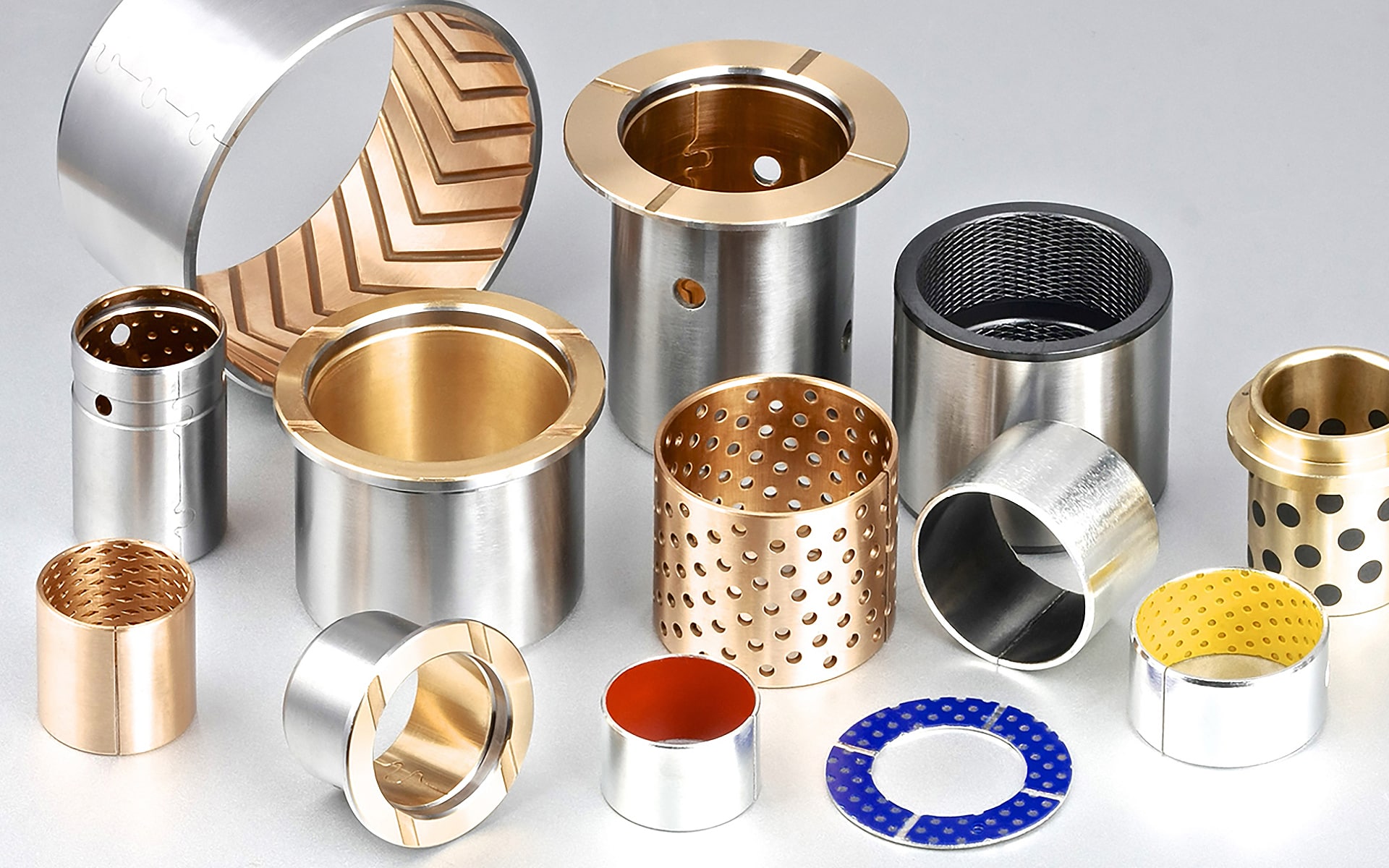

High Quality Sliding Bushing With Competitive Price
Self-lubricating, Maintenance Free
High load capacity sliding bearings
Welcome to bronzelube.com
- Simple structure, Convenient manufacturing, processing and disassembly.
- Good impact resistance and good vibration absorption performance, smooth operation, high rotation accuracy.
Reliable & safe sliding bushings solution
Provider of individual solutions for sliding bearings & bushings.
Rolling Bushings VS Sliding Bearings
Rolling bearings are more widely used
According to the friction properties of different bearings can be divided into rolling (friction) bearings and sliding (friction) bearings, it is obvious that rolling bearings must be smaller than sliding bearings friction resistance, fast starting, high efficiency, this is the advantages of rolling bearings.
Compared with sliding bearings, rolling bearings have larger radial size, poor vibration reduction ability, low life at high speed and larger noise.That’s the downside.
Choose your correct bearings to meet your requirements

What are the differences between rolling bearings and sliding bearings?What are the advantages and disadvantages of each?
Differences between rolling bearings and plain bearings — definitions and advantages and disadvantages
Rolling bearing, refers to the friction between the shaft and the shaft seat of mechanical operation is a rolling friction bearing, but the sliding bearing is still working under sliding friction.The structure of the rolling bearing is clear, and the uniform distribution of the rolling body can effectively reduce friction. Therefore, the mechanical starting is very fast and good, and the maintenance is also simple and convenient.In addition, it is more suitable for medium speed work, high speed work noise is relatively large, and will reduce its service life.In addition, the rolling bearing works with large vibration.Comparatively speaking, the sliding bearing runs smoothly and has no noise, but the starting resistance is relatively large.
Difference between rolling bearings and plain bearings — structure
The rolling bearing is composed of an inner ring, an outer ring, a rolling body and a cage, among which the outer ring is fixed and does not act as a support;The inner ring rotates with the shaft;The rolling body is the most important, which is related to the performance and service life of the bearing.The cage is used to assist the rolling body to make it evenly distributed.Sliding bearings do not have the above structure, in which the key role is the production material of sliding bearings.
In addition, the main role of bearings is to reduce friction, among which, the size of the friction force of rolling bearings is related to the level of manufacturing technology, that is, whether it is accurate.However, the size of the friction force of sliding bearings is related to its manufacturing materials. Usually, metal sliding bearings and non-metal sliding bearings (mostly plastic) are discussed.
Although rolling bearings and sliding bearings belong to mechanical parts, their operation is not the same.In addition, in the use of machinery, but also pay attention to the daily maintenance and repair of rolling bearings and sliding bearings.

Ready to Talk With
Our Bushing Bearing Expert Today?
A BUSHINGS EXPERT CAN HELP YOU DETERMINE WHICH BUSHINGS TYPE IS SUIT FOR YOUR APPLICATION.
Join Over 500,000 Customer Enjoying Buying Self-lubricating Bronze Bushing Parts Now
Always tested. Always proven. Always Bronzelube.com
bush bearing material
Slide bearings facilitate precise linear motion and accommodate structural expansion.
Optimal sliding bearing solution
Custom Sliding Bearing & Part Manufacturing Service to Your Exact Specification. Quote Now! The Predictable Bearings Life Offers High Planning Reliability To Help You Save On Cost.

Full range, even for hard-to-find bearing parts.
Quality design and supply of Sliding Bearings materials
The plain bearing assembly consists of structural spacers, PTFE (or other low friction material) sliding surfaces, and plain bearing plates. Plain bearing subtypes include linear ball bearings and linear rolling bearings. Plain bearings can also be called linear bearings, pilot bearings, or linear plain bearings.
They can be used in applications such as construction (bridge expansion brackets) and precision tools.
Plain bearings, also referred to as bushes, bushings or sleeve bearings, are cylindrical shaped and have no moving parts.
Plain bearings are used for sliding, rotating, oscillating or reciprocating movements. In sliding applications, they serve as plain bearings, treads and wear plates. In these applications, the sliding surfaces are generally flat, but can also be cylindrical, and the movement is always linear rather than rotary. Plain bearing construction can be solid or with a split seal (wrapped bearings) for easier installation.
Plain bearing advantages
Plain bearings are manufactured from a variety of materials including metal-polymer, recycled plastics, fiber-reinforced composites, and metals that reduce noise, increase service life, eliminate lubricants, and improve performance. The material of the plain bearing contributes to its mechanical and tribological properties.

Sliding Bearing
Experienced bearing specialist with rich knowledge and know-how
Plain bearings are bearings in which only sliding friction is generated. The shaft is usually supported on the sliding surface and the oil and air in between facilitates the sliding. Plain bearings are lightweight and have a long life, while introducing minimal vibration or noise.
We offer a portfolio of quality sliding bearings designed to improve the reliability and efficiency of plain bearing that keep bearing in motion.
The best sliding bearing solutions come only when the problem is comprehensively understood.
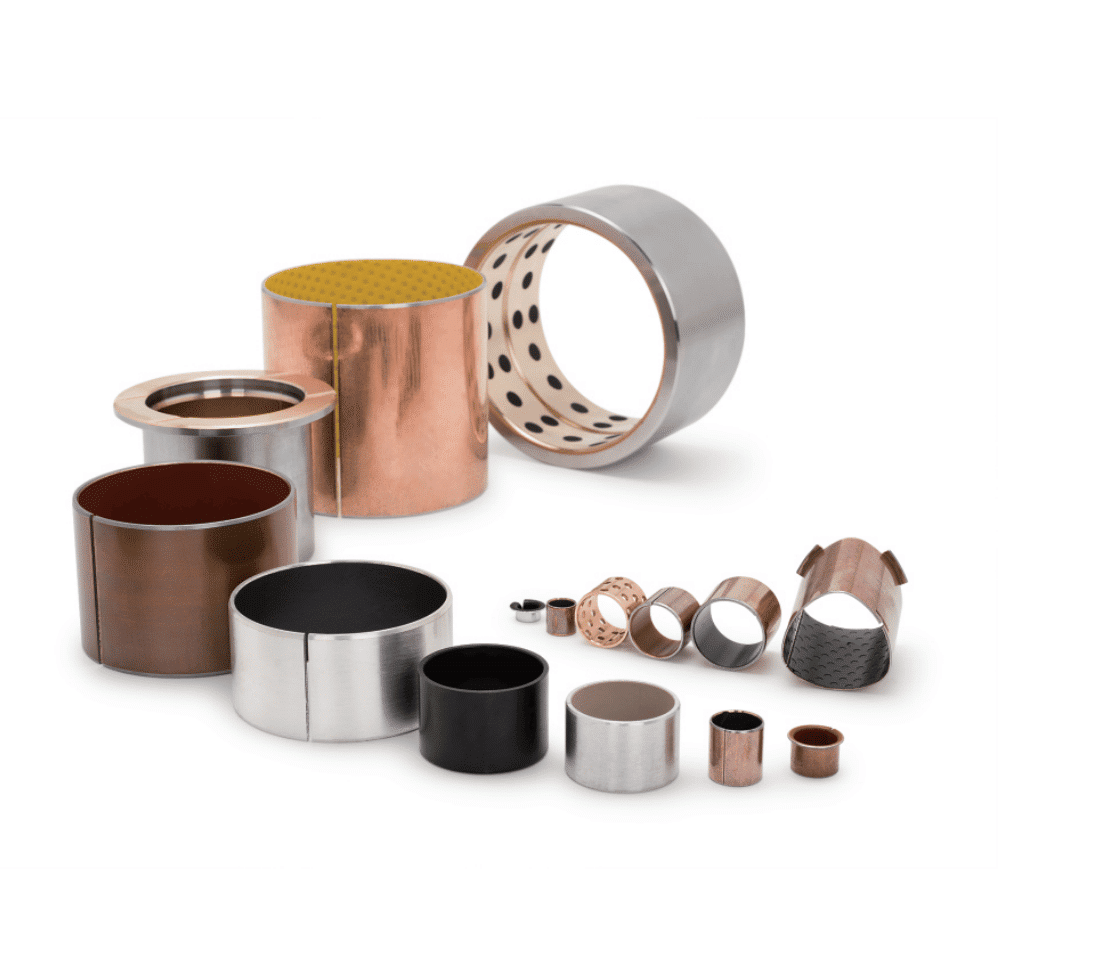
Sliding bearings: a complete range for all your needs

Ready to Talk With
Our Bushing Bearing Expert Today?
A BUSHINGS EXPERT CAN HELP YOU DETERMINE WHICH BUSHINGS TYPE IS SUIT FOR YOUR APPLICATION.
Join Over 500,000 Customer Enjoying Buying Self-lubricating Bronze Bushing Parts Now
Always tested. Always proven. Always Bronzelube.com
25+
Years of experience
95
Amazing employees
10k+
Hours of maintenance
2k+
Projects done
Bush Bearing Service
Custom service
Bush Bearing Custom Service. Your reliable source for bearing material – Selecting Custom Bush Bearing Material

